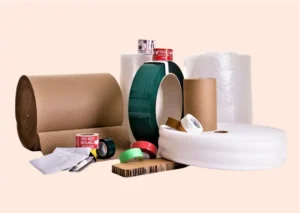Table of Contents
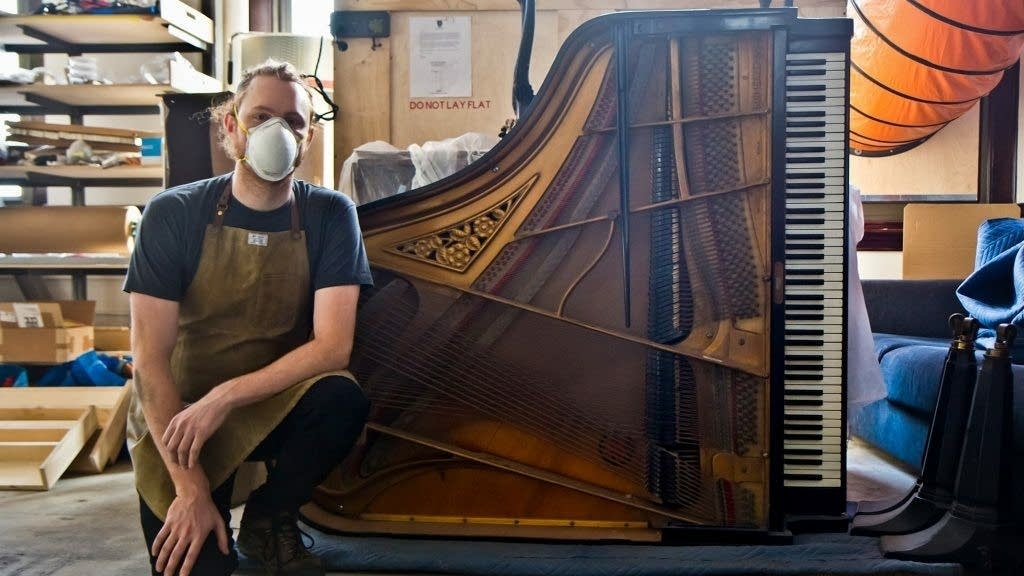
Key Takeaways
-
Moving a piano requires at least two people, but more are recommended for weight distribution and safety.
-
Proper equipment like a piano dolly, moving straps, and padding is essential to protect the instrument and movers.
-
Clear communication and a step-by-step approach are vital during the move to prevent accidents and injuries.
-
Special care must be taken when navigating through tight spaces and staircases to avoid damaging the piano.
-
After the move, it’s important to inspect the piano for any potential damage and to find the ideal spot for placement.
Can 2 People Lift a Piano?
So, you’re staring at your hefty piano and wondering, “Can two people actually lift this beast?” The short answer is, it’s possible, but it’s not just about brute strength. It’s about technique, preparation, and having the right tools for the job. Let’s dive into how to move a piano with just a pair of hands.
The Truth About Two-Person Piano Moves
First things first, you need to know what you’re dealing with. Pianos are not only heavy but also awkwardly shaped and delicate. An upright piano can weigh anywhere from 300 to 900 pounds, while grand pianos can tip the scales at well over 1,000 pounds. With this in mind, moving a piano is not just about lifting; it’s about balancing weight and navigating space carefully.
Essential Equipment for a Dual-Person Move
Before you and your buddy flex your muscles, you’ll need some essential gear:
-
Piano dolly: This specialized dolly can support the piano’s weight and provide a stable platform for transport.
-
Moving straps: These will help you get a better grip on the piano and distribute its weight more evenly.
-
Padding and blankets: Protect the piano’s delicate surface from scratches and dings.
-
Work gloves: These will give you better grip and protect your hands during the move.
With these items in hand, you’re set up for success.
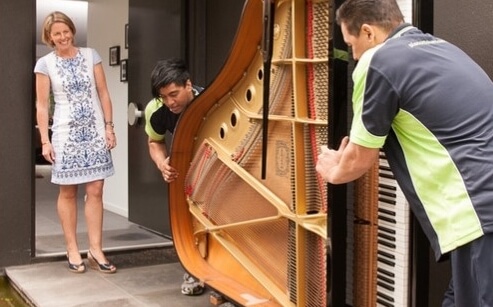
Step-by-Step Guide for Two-Person Piano Moving
Gearing Up: What You’ll Need
Before you start, make sure you have all the necessary equipment. You’ll need a comprehensive list, which can be found in this detailed guide on How To Move a Piano.
-
A heavy-duty piano dolly that can handle the weight of your piano.
-
At least two strong moving straps for secure lifting.
-
Protective padding or moving blankets to wrap the piano.
-
Skid board if you’re moving a grand piano.
-
Work gloves with a good grip.
-
Non-slip shoes to prevent any mishaps.
Having the right tools not only makes the job easier but also prevents damage to your piano and reduces the risk of injury.
Lifting Techniques: Safeguarding Against Injury
Lifting a piano is no joke, and doing it wrong can lead to serious injury. Here’s how to lift smart:
-
Stand at each end of the piano with your feet shoulder-width apart for stability.
-
Bend at the knees, not the waist, to get a low center of gravity.
-
Use the moving straps to lift, keeping your back straight and lifting with your legs.
-
Keep the piano as upright as possible to avoid putting stress on the inner mechanics.
Remember, it’s not a race. Take your time to ensure you’re lifting correctly.
Maneuvering Masterclass: Avoiding Common Pitfalls
Now that you’ve got the piano off the ground, you need to move it without causing damage. Here’s where the real challenge begins. Work in sync with your partner, taking slow, deliberate steps. Communicate constantly, and if something feels off, set the piano down safely and reassess.
Most importantly, plan your route ahead of time. Measure doorways, clear the path of obstacles, and make sure you know where you’re going. There’s nothing worse than having to navigate a surprise obstacle course while holding a piano.
Stay tuned for the next steps in our two-person piano moving guide, where we’ll cover the finer points of coordination, communication, and navigating the trickiest parts of your move.
Coordination & Communication: Synchronized Piano Moving
When it comes to moving a piano, coordination and communication between the movers are as crucial as the physical strength they bring. It’s like a dance, where each mover must be in tune with the other’s movements and ready to respond to any sudden changes.
Divide and Conquer: Assigning Roles
Before lifting a single key, decide who will lead and who will follow. The leader will direct the move, navigating the path and giving commands, while the follower will assist and balance the load. This clear division of roles will streamline the process and minimize confusion.
Voicing Out: Clear Signaling While Moving
Throughout the move, maintain a steady stream of communication. Simple commands like “step up,” “step down,” “tilt back,” or “hold” can prevent accidents. If you need to rest, say so. It’s better to take a break than risk dropping the piano or hurting yourself. For more detailed strategies, check out our comprehensive piano moving guide for efficient and safe transport.
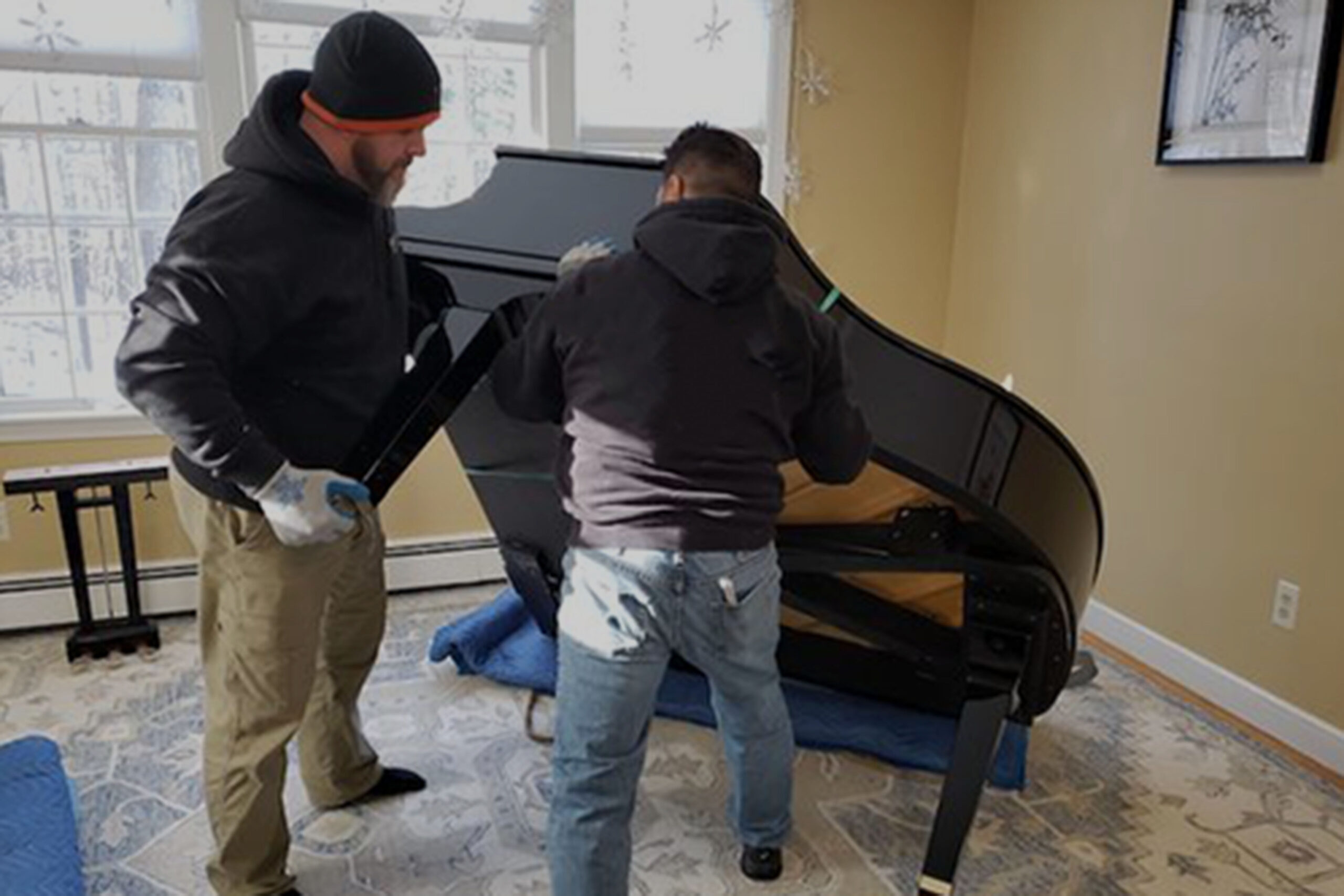
|
|
Description |
|---|---|
|
Experience |
Professional piano movers have the necessary experience to move pianos safely, minimizing the risk of damage to the instrument and injury to individuals involved in the move |
|
Convenience |
Hiring professionals reduces the stress and inconvenience of moving a piano, as experts handle the heavy lifting and logistics, allowing individuals to focus on other essential aspects of the move |
|
Piano Protection |
Professional movers know how to properly secure and transport pianos, ensuring they arrive at their destination undamaged. They use proper techniques and equipment to protect the instrument during transit |
|
Right Equipment |
Professional piano movers come equipped with specialized tools and experience required for moving pianos safely. They have the necessary equipment to handle the complexities of piano relocation effectively |
|
Safety |
Moving a piano involves significant risks due to its weight and size. Professional movers ensure safety by using proper lifting techniques and equipment, reducing the chances of injury or damage during the move |
|
Ease of Moving |
Hiring professionals makes moving a piano easier by eliminating concerns about damage or injury. With the right tools and techniques, professional movers ensure that the piano reaches its new location without any harm |
Hiring a professional piano moving company offers advantages such as expertise, convenience, protection for the piano, appropriate equipment, safety assurance, and ease of moving, making it a wise choice for ensuring a smooth and secure relocation of this valuable instrument
Moving through tight spaces requires a cool head and a good strategy. If the piano doesn’t fit, don’t force it. Take a moment to measure the space and remove doors or hardware if necessary. Sometimes, a slight tilt or angle change is all you need to squeeze through.
Stairs are a whole other beast. They demand respect, patience, and a solid plan. Always keep the piano’s weight balanced and move in unison, one step at a time. If the piano feels like it’s starting to control the move, stop, regain your footing, and start again.
Small Doorways: Strategies for Slim Passages
When faced with a narrow doorway, your first instinct might be to push harder. Instead, pause and assess. Remove the door from its hinges, if possible, to gain extra inches. Use your moving straps to angle the piano through the doorway without scraping the sides. For more in-depth techniques, check out our piano moving guide for efficient and safe transport.
Example: Last year, I helped a friend move an upright piano through an old Victorian home with notoriously narrow doorways. We took off the door, padded the edges of the doorway, and carefully tilted the piano on its side. It was a tight fit, but with patience and careful maneuvering, we got it through without a scratch.
Stair Strategy: Ascending and Descending Safely
When it comes to stairs, the risk increases exponentially. One person should be at the lower end to bear the weight, while the other guides from above. Use the “stair climbing” technique by tilting the piano back slightly and taking one step at a time. Communication is key—never assume the other person knows your next move.
After the Move: Piano Care and Positioning
Once the piano is in its new location, don’t rush to unpack. Take a moment to inspect the piano for any signs of damage. Check the legs, pedals, and keys for anything amiss. If all looks well, carefully unwrap and start the positioning process.
Post-Move Inspection: Checking for Damage
Look over the piano’s surface, legs, and casters for any new dents, scratches, or other damage. Pay particular attention to the keys and the internal mechanism if the piano was transported on its side. If you find damage, document it immediately with photos and notes.
Placement Perfection: Finding the Ideal Spot
Finding the right spot for your piano is about more than just aesthetics. You want to avoid placing it in direct sunlight, near heating or cooling vents, or in areas with drastic temperature changes. These can all affect the tuning and longevity of your instrument.
Once you’ve chosen the perfect spot, gently move the piano into place. If it’s an upright, ensure it’s against an inner wall for better acoustics and climate control. For grand pianos, consider the room’s acoustics and the piano’s orientation for the best sound.
Remember, after the physical move, it’s wise to have a professional piano tuner come and adjust your instrument. The move can affect the strings and hammers, so a tuning will ensure your piano sounds its best in its new home.
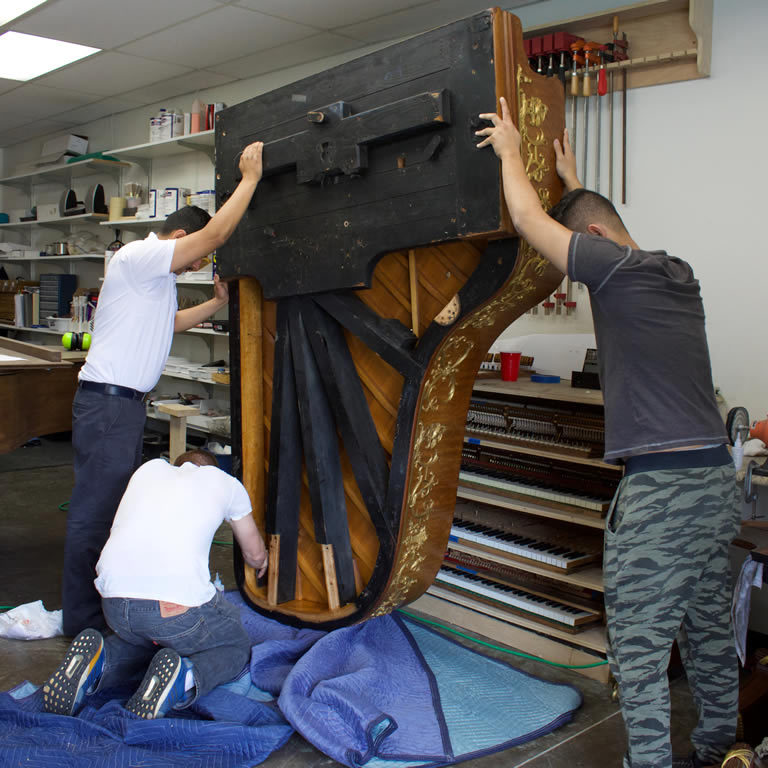
Frequently Asked Questions
What’s the minimum number of people needed to move a piano?
While it’s possible for two people to move a piano, I strongly recommend having at least four. This ensures enough hands on deck for a balanced lift and reduces the risk of injury or damage to the piano. More helpers means less strain on each person and a smoother move.
Can pianos be dismantled for easier moving?
Yes, certain parts of a piano can be dismantled. For upright pianos, the music rack and sometimes the lid can be removed. For grand pianos, the legs and pedal lyre can be taken off, and the piano can be placed on its side on a skid board. However, this should be done with great care and ideally by professionals or under expert guidance, as the internal mechanics of a piano are delicate. For more detailed guidance, see How To Move a Piano.
Keep in mind, even with dismantling, pianos are still large, heavy, and unwieldy objects that require careful handling. For more information, see our piano moving guide for efficient and safe transport techniques.
Here’s what you can generally dismantle:
-
Music rack
-
Piano lid (in some cases)
-
Legs and pedal lyre of a grand piano
How do you protect a piano’s keys during a move?
To protect the keys, close the keyboard lid to prevent them from moving and lock it if possible. If the lid doesn’t lock, secure it with stretch wrap or packing tape, making sure the tape doesn’t touch the wood. Then, wrap the entire piano in moving blankets, ensuring that the keys are well-padded and protected from bumps during the move.
What are the risks of moving a piano with only two people?
Moving a piano with just two people increases the risk of personal injury due to the weight and awkwardness of the piano. There’s also a higher chance of damaging the piano or the property if you’re unable to control the piano’s movement adequately. Always assess the risks before attempting a two-person move, and consider enlisting more help or hiring professionals.
Should you tune your piano immediately after the move?
It’s generally a good idea to wait a few weeks after moving a piano to have it tuned. This allows the instrument to acclimate to its new environment, especially if there are changes in temperature and humidity. However, if the piano sounds significantly out of tune or you’re preparing for a performance, you may want to have it tuned sooner.
In conclusion, moving a piano is no small feat, and doing it with just two people adds to the challenge. With the right preparation, equipment, and techniques, it’s possible to move a piano safely and efficiently. Remember to plan every step, communicate clearly, and handle the piano with the care it deserves. And once it’s in place, give it the proper post-move care it needs to continue bringing music into your home.



